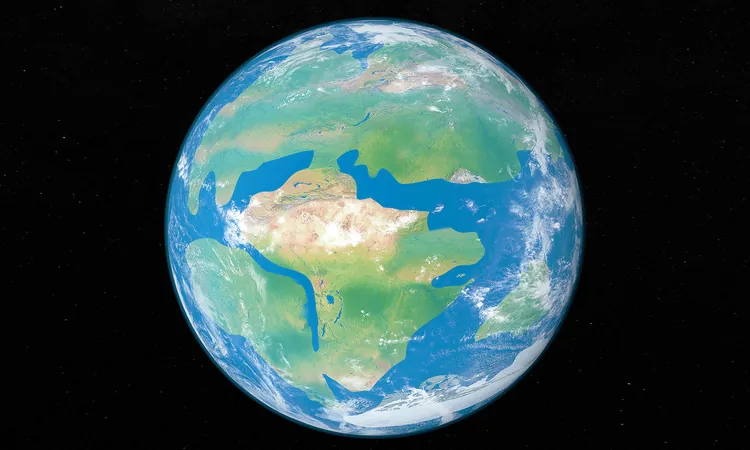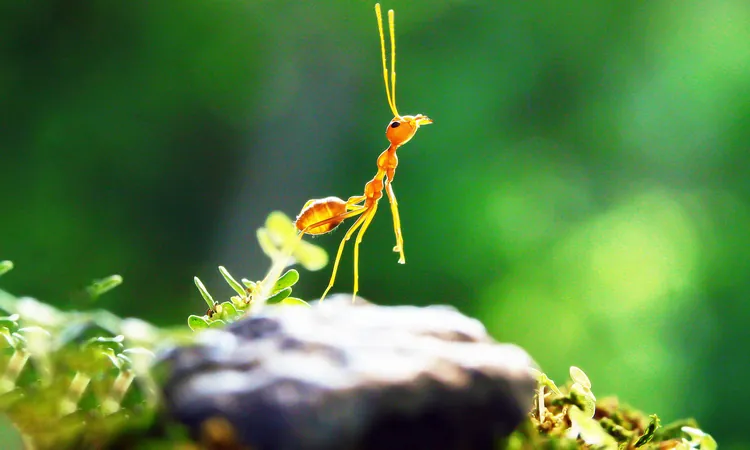
Groundbreaking Discovery Reveals Earth's Hidden History of Life 800 Million Years Ago!
2024-10-06
Author: Daniel
What if everything you thought you knew about evolution is about to be turned on its head?
Recent findings by Brazilian researchers unveil a stunning narrative about Earth, 800 million years ago, teeming with a diverse array of life forms that challenge traditional evolutionary theories.
A Closer Look at Eukaryotes
This ambitious study delves deeply into the world of eukaryotes—organisms featuring one or more cells with DNA encased within a defined nucleus. This category includes all complex life on our planet, from humans to fungi, leaving out only bacteria and archaea. The researchers underscore a significant moment in history: eukaryotes are believed to have arisen about 1.5 billion years ago, flourishing during the Neoproterozoic oxygenation event that occurred between 850 and 540 million years ago—a critical period when oxygen levels skyrocketed, fundamentally altering Earth’s biosphere.
Survival Against the Odds
What’s truly remarkable is that these primitive ancestors endured not one but two episodes of extreme glaciation—known as the Cryogenian period (790-635 million years ago)—when the entire planet was enveloped in ice for roughly 100 million years. Talk about survival! The resilience displayed by these organisms sets a fascinating stage for understanding life’s endurance in the face of climate extremes.
Challenging Established Paradigms
Daniel Lahr, a prominent researcher from the University of São Paulo's Institute of Biosciences, highlights the ground-shaking shift in how we perceive the Neoproterozoic Era. Traditionally, it was thought that only a sparse population of life, mainly bacteria and protists, existed during this era. However, the discovery of fossils dating about 800 million years back indicates that unicellular, eukaryotic, and heterotrophic organisms were common, prompting a reevaluation of the origins of biodiversity on Earth.
These findings push the timeline of life’s diversification back by an astronomical 260 million years, well before the famous Cambrian explosion when complex life forms first flourished.
Impacts on Modern Science and Climate Understanding
This research is more than just an exploration of ancient life; it offers vital insights for contemporary science, especially in understanding how current ecosystems might adapt to ongoing environmental shifts. The historical perspective on ancient climate resilience might help scientists predict biological responses to today’s climatic challenges.
Furthermore, this rekindled timeline necessitates an interdisciplinary approach, merging insights from paleontology, geology, and molecular biology to grasp the full scope of life’s adaptability and evolution.
The Bigger Picture: A Tapestry of Life’s Evolution
The researchers employed advanced techniques such as single-cell transcriptomics to piece together an intricate mosaic of life 800 million years ago. According to Lahr, this study opens exciting avenues for future research, directly linking the emergence of various life forms—including animals, fungi, and possibly plants—during this transformative epoch.
As we continue to unearth the rich tapestry of Earth’s biological history, we stand on the brink of potentially groundbreaking revelations that could reshape our understanding of life itself. With every fossil discovered, we are reminded of the incredible complexity and unyielding spirit of life throughout the ages. The next chapter of this awe-inspiring story is yet to be written—who knows what new mysteries await just beneath our feet?
Conclusion
This trailblazing study has been documented in the *Proceedings of the National Academy of Sciences*, a testament to humanity’s relentless pursuit of knowledge and the extraordinary narrative of life's evolution on Earth.




 Brasil (PT)
Brasil (PT)
 Canada (EN)
Canada (EN)
 Chile (ES)
Chile (ES)
 España (ES)
España (ES)
 France (FR)
France (FR)
 Hong Kong (EN)
Hong Kong (EN)
 Italia (IT)
Italia (IT)
 日本 (JA)
日本 (JA)
 Magyarország (HU)
Magyarország (HU)
 Norge (NO)
Norge (NO)
 Polska (PL)
Polska (PL)
 Schweiz (DE)
Schweiz (DE)
 Singapore (EN)
Singapore (EN)
 Sverige (SV)
Sverige (SV)
 Suomi (FI)
Suomi (FI)
 Türkiye (TR)
Türkiye (TR)